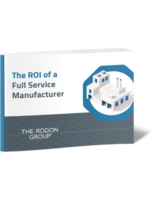Lead Paint Testing Standard is approved by ASTM committee.
Press Release Summary:
ASTM International has approved F2853, Test Method for Determination of Lead in Paint Layers and Similar Coatings or in Substrates and Homogenous Materials by Energy Dispersive X-Ray Fluorescence Spectrometry Using Multiple Monochromatic Excitation Beams to help detect and quantify lead concentration in toys and other children's products. HDXRF test enables lead quantification separately for substrate and paint level in 5 minute measurement cycle.
Original Press Release:
ASTM Declarable Substances Committee Approves New Lead Paint Testing Standard
W. CONSHOHOCKEN, Pa. - A new ASTM International standard will provide the means to quickly detect and quantify the lead concentration in toys and other children's products. The new standard, F2853, Test Method for Determination of Lead in Paint Layers and Similar Coatings or in Substrates and Homogenous Materials by Energy Dispersive X-Ray Fluorescence Spectrometry Using Multiple Monochromatic Excitation Beams, was developed by Subcommittee F40.01 on Test Methods, part of ASTM International Committee F40 on Declarable Substances in Materials. The analytical technique described in this standard is commonly referred to as HDXRF.
"Frequent testing of children's products aids in identifying sources of lead contamination and ultimately prevents out-of-compliance merchandise from reaching store shelves," says Berry Beumer, vice president, XOS Inc., and chairman of the task group that developed F2853.
ASTM F2853 provides a convenient means to test for lead using the energy dispersive X-ray fluorescence spectroscopy technique. Such testing will ensure that toys and other children's products will comply with laws (such as the Consumer Product Safety Improvement Act of 2008) that are currently being enforced by the U.S. Consumer Product Safety Commission.
According to Beumer, the HDXRF test described in F2853 enables lead quantification separately for the substrate and paint level in a 5 minute measurement cycle. Beumer notes that all interested parties are invited to join the task group responsible for F2853 as it considers future revisions to the standard.
"While the presence of lead has been of primary concern to industry, other harmful elements such as cadmium, arsenic and antimony are now also under scrutiny," notes Beumer. "The task group is anticipating continued expansion of F2853 to include these and other elements in the standard. Additional interlaboratory studies will be required for the precision and bias statements for these additional elements, and the continued participation of third party test labs and toy and apparel manufacturers in such studies will be very helpful in expanding the scope of method."
To purchase ASTM standards, visit www.astm.org and search by the standard designation number, or contact ASTM Customer Relations (phone: 610-832-9585; service@astm.org). ASTM International welcomes and encourages participation in the development of its standards. For more information on becoming an ASTM member, visit www.astm.org/JOIN.
ASTM International is one of the largest international standards development and delivery systems in the world. ASTM International meets the World Trade Organization (WTO) principles for the development of international standards: coherence, consensus, development dimension, effectiveness, impartiality, openness, relevance and transparency. ASTM standards are accepted and used in research and development, product testing, quality systems and commercial transactions.
ASTM Committee F40 Next Meeting: Nov 17-19, November Committee Week, San Antonio, Texas
Technical Contact: Berry Beumer, XOS Inc., East Greenbush, N.Y., Phone: 518-880-1500, ext. 400; bbeumer@xos.com




